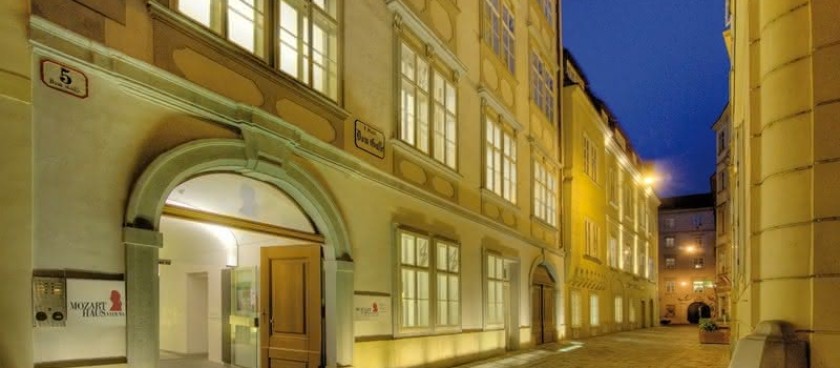
- #AT15
- Domgasse 5, 1010 Wien, Austria
- +4315121791
- office@mozarthausvienna.at
- https://www.mozarthausvienna.at/en
- Working hours*:
Adult - 11€
Reduced (students and seniors, Vienna Card) - 9€
Children and teenagers up to 19 years - 4,50€
Family ticket (2 adults + up to 3 children) - 24€ - Prices*:
Monday - Sunday
10:00 - 19:00
Last admission 18:30 - * - opening and closing times as well as entrance prices, are subject to alterations without notice. Visitors are advised to check before visiting.
- 48.2081650, 16.3749620 Copy to clipboard Copy
-
#Museums , #Art&Music
Visitors can also find out interesting information about the places where he performed and the major personalities in his life, the socio-political context, his links with the Freemasons and his social life: balls, gambling, fashion, literature and science.
An installation with five peepholes gives a forbidden glimpse of the erotic “amusements” in this era. These rare shows are set up at either side of the “Grabennymphen” installation, in which visitors can look down through a door onto a stylised scene of the Graben showing refined gentlemen and not so refined ladies of easy virtue.
MOZART'S APARTMENT
The centrepiece of Mozarthaus Vienna
Mozart and his family lived there from 1784 to 1787, during which time he wrote the world-famous opera “Le Nozze di Figaro” and three of the six Haydn Quartets. It is the largest, most elegant and expensive apartment ever occupied by Mozart and the only one that is still intact today.
It consists of four large rooms, two small ones and a kitchen. With the aid of pictures and documents visitors can follow in the footsteps of Mozart and his family. The apartment, which is curated by Wien Museum, contains a magnificent musical clock made around 1790, which plays a variation of the “Andante for a cylinder in a small organ” (KV 616) that Mozart is thought to have composed for this very clock.
MOZART'S MUSIC
“ … and the best place in the world for my profession”, is the way Mozart described Vienna to his father.
The tour of the second floor looks at Mozart’s main musical and composer colleagues in Vienna and his cooperation with the librettist Lorenzo da Ponte in “Le Nozze di Figaro” and “Don Giovanni”.
These rooms have original stucco ceilings and wall paintings that show how the apartment must have been decorated in Mozart’s time. Mozart’s “Requiem” and the end of his life are also covered on this floor, along with a multimedia theatre installation “The Magic Flute – Divine Laughter”, which features three-dimensional collages of scenes from “The Magic Flute”. The "Figaro Parallelo" media installation provides an overview of Figaro productions from leading international opera houses and the diffrent approaches by directors.